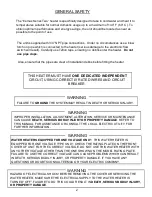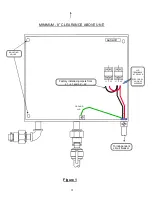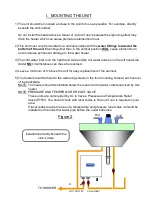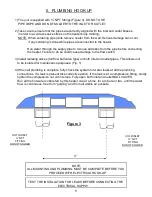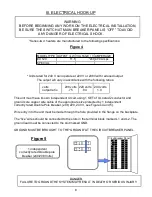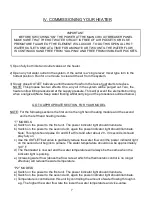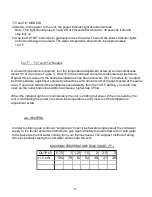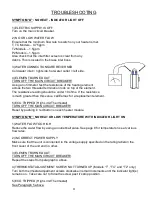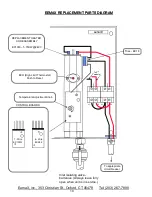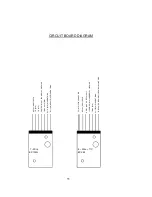
IMPORTANT
BEFORE SWITCHING “ON” THE POWER AT THE MAIN CIRCUIT BREAKER PANEL
MAKE SURE THAT THE HOT WATER CIRCUIT IS FREE OF AIR POCKETS OR ELSE
PREMATURE FAILURE OF THE ELEMENT WILL OCCUR. TO DO THIS OPEN ALL HOT
WATER OUTLETS ONE AT A TIME FOR A MINUTE OR TWO UNTIL THE WATER FLOW
IS CONTINUOUS AND FREE FROM “GULPING” AND FREE FROM VISIBLE AIR POCKETS.
1) Open fully both inlet and outlet valves at the heater.
2) Open any hot water outlet in the system. If the outlet is a “single lever” mixer type turn to the
hottest position. Run for one minute to clear all the air from the system.
3) Slowly close OUTLET ball valve until the water flow from the faucet just starts to reduce.
NOTE: This process has two effects. One, any air in the system will be purged out. Two, the
heater units will be pressurized at the supply pressure. This will prevent the elements burning
when energized.(Note: Keep water flowing whilst carrying out the procedures outlined below.)
GO TO APPROPRIATE SECTION FOR YOUR MODEL
NOTE: For the following sections the first unit is the right hand heating module and the second
unit is the left hand heating module.
IV. COMMISSIONING YOUR HEATER
“T” MODELS
a) Switch on the power to the first unit. The power indicator light should illuminate.
b) Switch on the power to the second unit, again the power indicator light should illuminate.
Note: This light should pulse On and Off at first and after about 20 - 30 seconds it should
stay fully on.
c) Use the OUTLET ball valve to gradually reduce the water flow until the power indicator light
on the second unit begins to pulsate. The water temperature should now be approximately
140° F.
d) The thermostat is now set and the water temperature will always be the same when the
indicator light is pulsing.
e) Increasing water flow (above the flow rate at which the thermostatic control is no longer
effective) will reduce the water temperature.
“P2” MODELS
a) Switch on the power to the first unit. The power indicator light should illuminate.
b) Switch on the power to the second unit, again the power indicator light should illuminate.
c) Temperature is controlled on this unit by controlling the amount of water flowing through it.
e.g. The higher the water flow rate the lower the water temperature and vice-versa.
7


